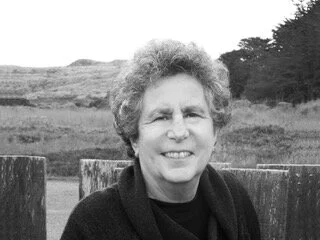Joshua McKinney on “Patriotism”
I grew up in northern California, which is not to be confused with the Bay Area. A full third of the state lies north of San Francisco. I mean the real northern California: Siskiyou, Modoc, Lassen, Plumas, Shasta, Trinity, and Humboldt Counties—some of the largest and most sparsely populated counties in the state—and little towns with names like Chester, Hayfork, Etna, Likely. This is the part of California the inhabitants like to refer to as the State of Jefferson. Demographically, it is largely white and politically conservative. The ecosystems of this region, high desert, mountains, coastal rain forest, are striking in their variety and beauty.
Like many of my poems over the years, “Patriotism” features details regarding my father and our relationship. He did, in fact, say that he “loved his country,” and he meant it literally, taking wry pleasure in the distinction he was making between his love of the land itself and any notion of a “nation under God.” He was born at least a hundred years too late and would have been more content exploring his country before California was a state, perhaps trading with the indigenous peoples of the region whose culture he respected and whose lifestyle he envied. I may have inherited some of his general misanthropy. Certainly, my relationship with the inhabitants of northern California has changed, as I have changed, over the years.
“Patriotism” evolved as I grappled with my discomfort with the politics of the region where I was, to borrow a phrase from Bob Dylan, “partly raised.” Despite the allure of the landscapes, I no longer feel at home there. Typically, my poems grow towards some kind of conclusion, but “Patriotism” was a poem whose thematic concerns were unclear to me at first, and it grew smaller with each revision. Early drafts contained much more about my father, musings upon being born out of one’s time, and various other ramblings that I would be embarrassed to share. Even Kintpuash—aka Captain Jack, the Modoc chief who, with a small band of followers and outnumbered ten to one, held off the United States Army in the lava beds for several months in 1872-73—even he made an appearance. If there is a lesson in craft here, it is an old one: let the poem sit, get some distance from it, allow the poem to determine its direction, and don’t be afraid to cut.
In a sense, it was climate change that finished this poem for me. Over the past two decades, California has been increasingly ravaged by wildfires. Fire season is almost yearlong, and this trend shows no sign of abating. We Californians have grown accustomed to “red flag” days and air indexes in the “unhealthy for all groups” range. Mt. Shasta (14, 179 ft.) is home to the four largest glaciers in California. Surprisingly, and in contrast to what is being observed in most areas of the world, the Shasta glaciers are growing. Whitney Glacier, for example, has expanded thirty percent over the last fifty years. This is because increased temperatures have tapped Pacific Ocean moisture, leading to snowfalls that supply the accumulation zone of the glacier with forty percent more snowfall than is melted in the ablation zone. Predictive models suggest, of course, that eventually the glaciers will begin to retreat.
These hard facts, foregrounded by the epigraph from Frost, subsume the poem’s other particulars. Ultimately, I came to understand that my poem was about change. I hope that the details of “Patriotism,” both personal and climatological, have melded into a whole that resists paraphrase, something a reader will be able to feel rather that fully articulate, something, perhaps, like the feeling of insignificance and awe I felt when gazing down from the slopes of Mt. Shasta.



